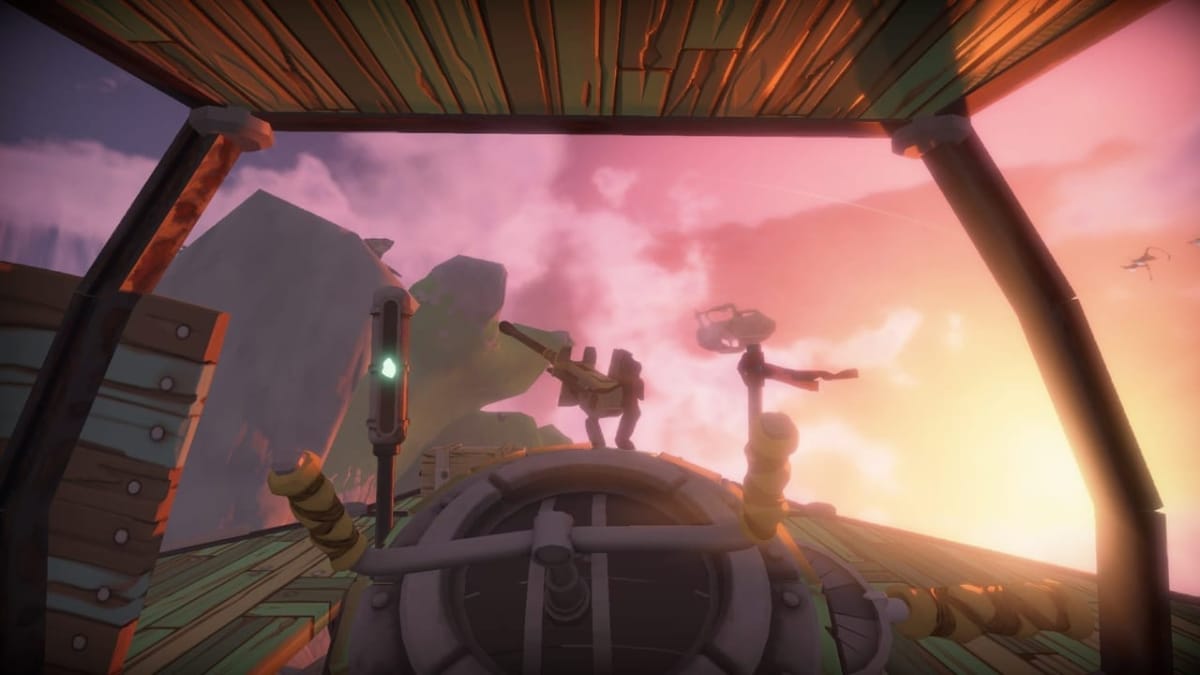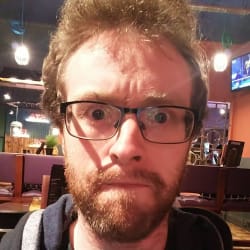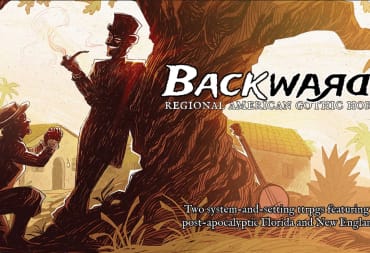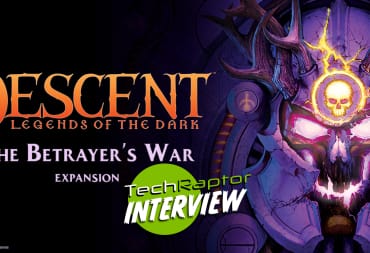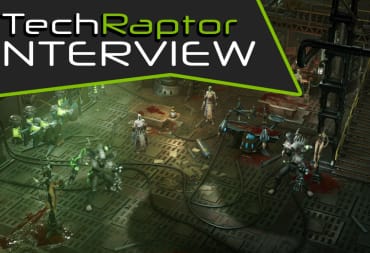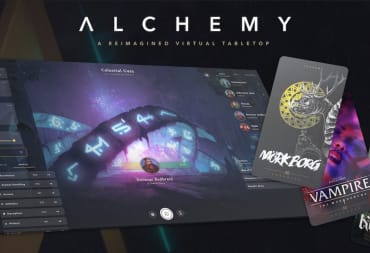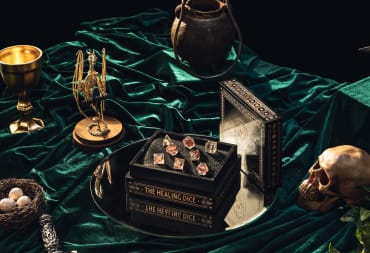This past Thursday marked the launch of UK-based developer Bossa Studios' latest project, Worlds Adrift. The game self-identifies as a "community-generated" MMO; it's a physics-based, open-world exploration game with elements of crafting and shipbuilding. The unique selling point here is that Bossa has "outsourced" creating islands and certain assets to the community, so every island players will see in the game was created by another player. I was lucky enough to attend the launch event in London, which saw YouTubers, influencers, and journalists launched into the sky aboard a mighty zeppelin (okay, it was a platform on a crane decked out to look like an in-game skyship, but let's dream for a little longer). At that same event, I managed to snag Bossa lead designer Luke Williams and co-founder Henrique Olifiers to chat about the community-focused development of Worlds Adrift, as well as a few other things around the game's production process. Here's my interview in full.
TechRaptor: I'd like to focus on the community aspects of the game today, if that's alright. Before I do that, though, I can't not mention the skyship.
Luke + Henrique: (laughs)
TR: Tell me about that logistically. How did you guys decide you wanted to launch the game on a skyship, so to speak?
Luke: Our marketing team surprised us with it about two months ago. We launched from Early Access today, so our headspace has basically just been "get the game running". All of a sudden, our marketing team told us "oh, by the way, guys, on launch day, you're going up in the sky". So I said, "you mean in the game, right?" "No, on a crane". I'm like, what? (laughs) So, yeah, it was very much sprung on us.
Henrique: We have a very flat team. We don't have, like, a development team, a marketing team, they work together, right? On the streams, and on the tweets, and everything. So when they came up with the idea (for the skyship), they knew exactly how to execute it, because they're embedded in the production process like everybody else. That's one of the advantages of having like-minded people, and everybody working together under the same roof.
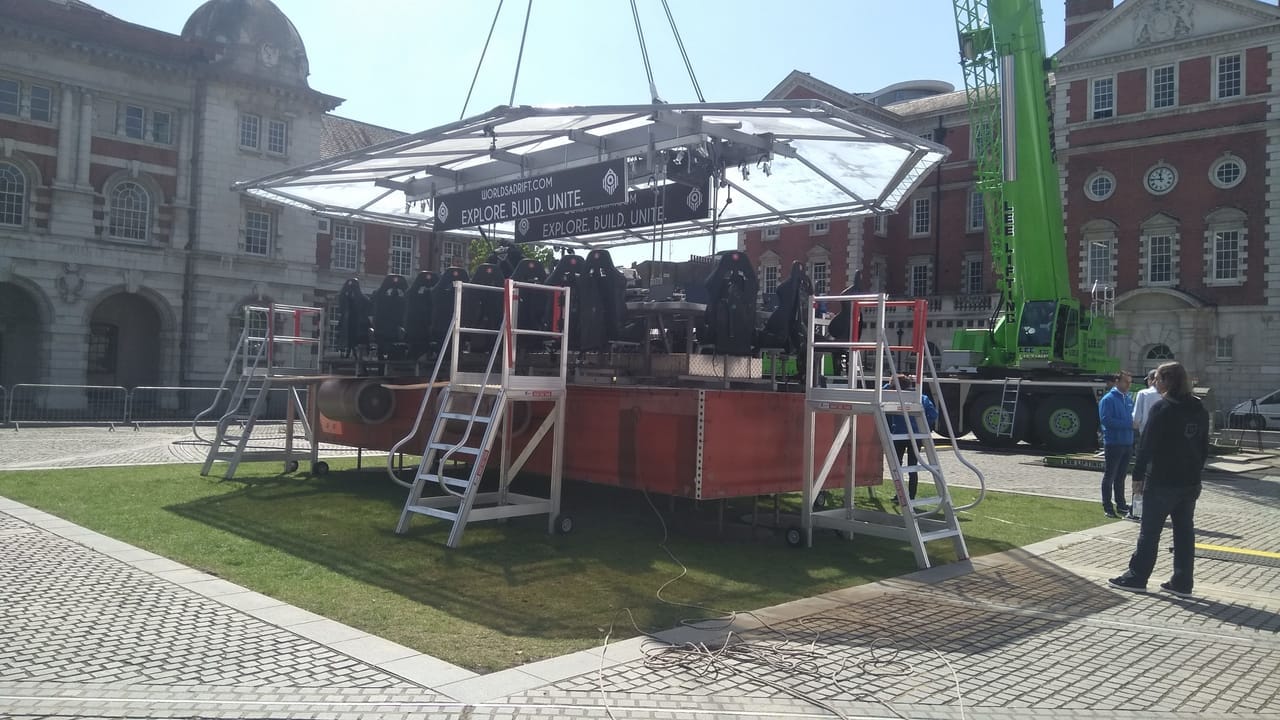
TR: Let's talk about Worlds Adrift. You've talked about this as a "community-generated" MMO. What would you consider to be the main precedents for the game, and this style of content generation?
Luke: Well, it kind of comes from my history with I Am Bread and Surgeon Simulator. So many people were creating little stories within those games. In the Alien update (for Surgeon Simulator), we named all the organs after YouTubers, and we saw and liked the reaction to that. Videos of our games which had funny moments in them, we made those into achievements in Surgeon Simulator, and we were like "how far can we take that premise?", cause we saw how excited people got. Is there a way we can fundamentally build that into a game? With Worlds Adrift, we knew we wanted people to build ships, and we wanted every ship to be unique. We wanted it to be collaborative, too; everyone's got to sort of bolt on the parts themselves. It was a year or so later, when we had that framework in place, that we decided to let players create their own islands.
TR: Can you tell us a bit about that? How did you arrive at players creating their own islands for Worlds Adrift, and what does this level of community involvement mean for the game?
Henrique: Yeah, that came about partly because of the sheer size of the world, which was too big for us to specifically hand-craft everything ourselves. We decided to look into procedural generation, and we soon found that it created beautiful vistas, but there's no human touch, there's no secret, there's nothing beneath that door, right? Systems don't do that yet. Looking at Wikipedia, YouTube, and thinking "this method of crowdsourcing content works. Why wouldn't it work with games?" And so we rolled out our tool to the players, and over time, they started to surprise us with quality of content that we couldn't match ourselves. So once they started to do that, we started to give them more tools, gameplay tools, and now they can start creating puzzles, and whatnot.
Luke: It started because we didn't quite know what to expect, so we thought "okay, we'll let you kind of create the visual side of things". It wasn't long after that we were kind of blown away by how much they kind of bought into the world, the setting, crumbling ruins on floating islands and such. And people were like "okay, so I've built this crazy temple, this crazy cave complex, but I want a player to want to explore that". If we left it up to procedural generation, we wouldn't know what arrangement of polygons was impressive-looking, you know, because computers can't do that. So we gave players the ability to tell their own stories, placing treasure chests in caves, carving murals, allowing people to tell the story of their island. As a player, too, each island is one of hundreds that you've been exploring, but you'll walk in to this cave and go "ah, of course the treasure chest is there".
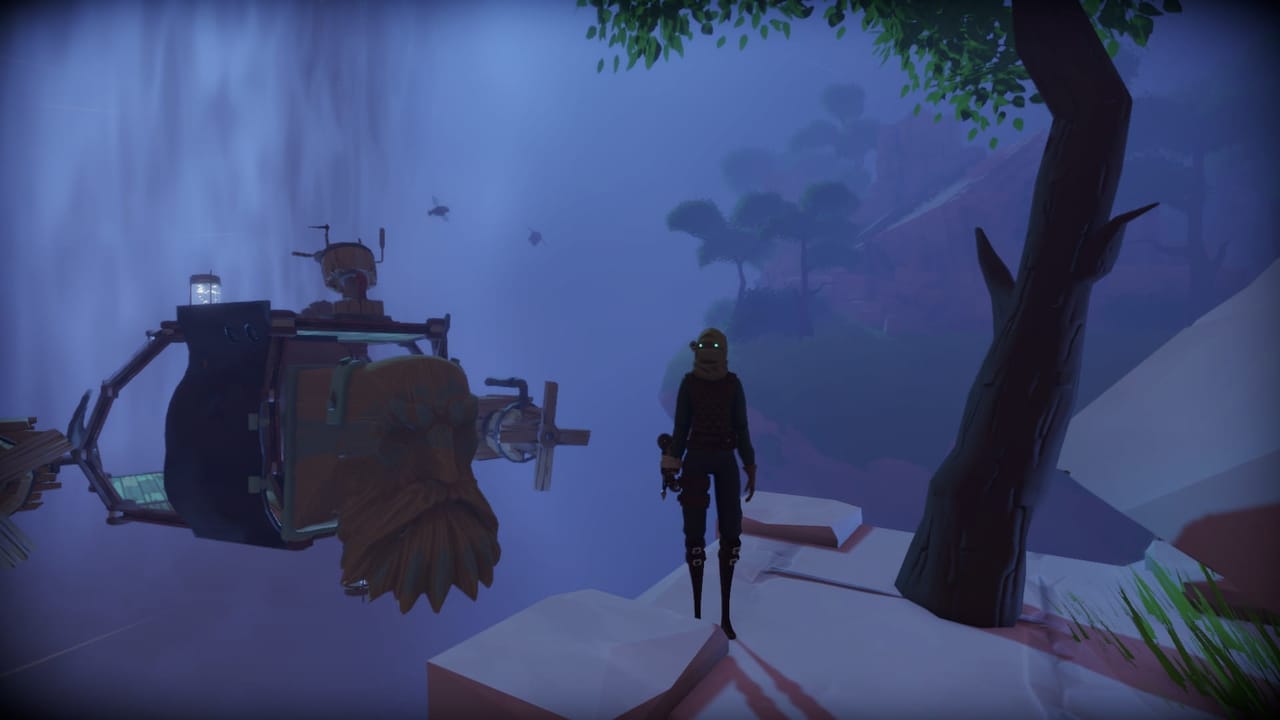
TR: I know people have mentioned things like No Man's Sky and Sea of Thieves as touchstones for Worlds Adrift. What do you guys feel you're doing differently with your game? Both of those games got slightly lukewarm initial critical reception. How do you hope to circumvent this with Worlds Adrift?
Henrique: It's fair for people to define something new by old concepts. You know, trains used to be called "iron horses", and stuff like that. So, I get the comparison. It's natural to do that. Firstly, of course, as I said earlier, we don't have procedural content, we have player-crafted content, so we already differentiate ourselves to those games with that. The second element of it, though, is that Worlds Adrift is truly open-ended, in the sense that you, your friends, your foes and everybody else are in a universe which you make yourself. So we already have people establishing trading posts, people trying to claim territories, and people being pirates, and we see the dynamics between those tribes. We didn't tell you you have to be a pirate. We didn't tell you you have to be an explorer. Our players are making that up, and as they're making that up, we watch and see which system we can roll out to make this kind of activity more interesting for everyone. So that's our job: to keep expanding the game every couple of weeks with new systems, not new content.
Luke: Yeah, there's this old lady called Anne who runs a shop in the game's Badlands area, where there's no fuel. Lots of ships in that area rely on her fuelling station, and players will come to her with rare items and stuff they've found in order to trade for fuel. It's weird, because she's so innocent, She's on the forums like "okay, so my post is now set up in this area of the map", but that area of the map was named by players. We have an entirely different set of players who fly through and chart our world, because we don't actually have a world map. With the Early Access launch today, we've launched a brand new layout of the world, brand new islands. The community right now doesn't know where they are, so they're relying on this set of players to go through and map the world because they don't know where they are. These players have "pirate immunity", because the community in general is like "okay, don't mess with those guys, because we need them. Nobody knows where we are". This kind of strange play style crops up, and that's what we're looking out for.
TR: You said earlier that you create systems for people to interact with rather than quests and leveling systems like a traditional MMO. How much of a guiding hand is there in terms of developer intervention?
Henrique: Oh, for now, none whatsoever. One of the most underdeveloped aspects of Worlds Adrift right now is the awarding system, right? So you do something and there's a sense of "oh my gosh, what did I do?" So that is something that we'll have to work on over time and make more intuitive. That said, the game was meant to be free for the players (to make their own rules), and they guide each other, and that is a dynamic we wanted to have. The best moments you have in online games are where you're interacting in one way or another with another player, not when you're doing the quest that someone's done a hundred times before you.
Luke: Yeah, this reminds me of a story we heard where two players had a sort of "sidequest" happen to them in game. They met someone who was like "yeah, there's this guy under the island, he's this pirate guy, he's just been stealing all our stuff". So these two players said "alright, we'll fly over there and we'll take a look", and they went into the cave and there was this guy there with hoarded ship parts all around him. So they killed him, took his stuff and gave it back to the guy they spoke to outside. They looked at each other afterwards and were like "wait, did we just do a sidequest?" We have that, because the world is so huge and it's persistent, it's not session-based. You're not being matchmade with other players, so when you find an old ship that's abandoned, somebody made that. We even had altruistic players who would upload their rarest ship schematics to assembly stations on different islands just so other players would find them and have something cool to make.
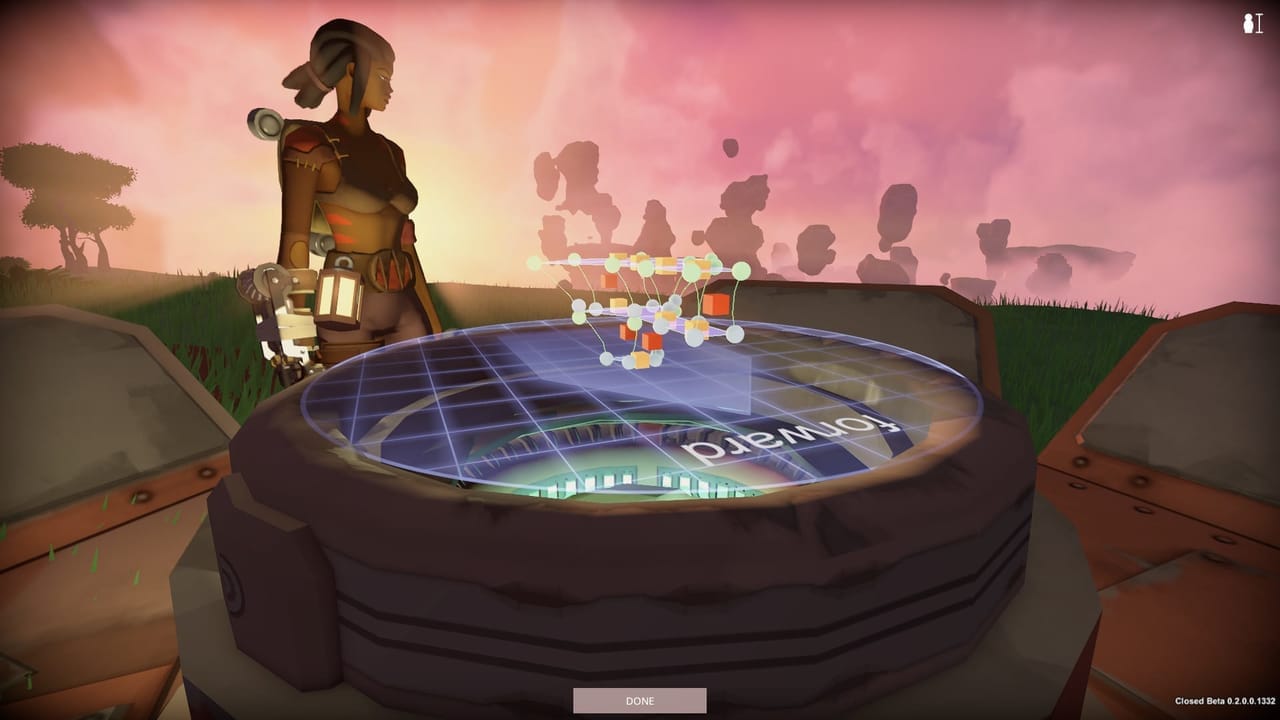
TR: You mentioned altruism there. I want to talk for just a minute about the flipside of that, which of course is griefing. In a community-driven game, what's the framework for dealing with people who go too far? Where is the line?
Henrique: Yeah, there is always too far, but I think that it's a density problem. If you're running into this kind of thing every five minutes, then yes, it's terrible. If you're running into this thing now and then, it's part of the adventure and part of the risk and reward. So we have to be vigilant. If things start to go the wrong way, we have to rebalance the game to make sure players are doing OK.
Luke: We've done a lot of updates as well that focus on that. Originally, your pistol could destroy ship parts. As soon as that became prevalent, we would get gangs of players who would just come together, fire at ships and they'd just come apart. So we were like, okay, this is something we need to change. The ship bubble you construct your ship in was originally not protective; you could just be bombarded from orbit, straight onto your ship, and you were helpless. Now, though, it's a protective shield which blocks even pistol bullets. So we're slowly seeing where those things happen, and making sure that the most egregious parts of it we smooth out.
Henrique: It was never meant to be a safe game. It's a game that has risks. Nobody complains when they get shot when playing PlayerUnknown's Battlegrounds, right? The problem is that many people come from the traditional MMORPGs, where you have no-PVP zones, safe zones, et cetera. Our way of thinking goes back to Ultima Online, where people could just kill you whenever they wanted.
Luke: We also have the issue of this being a primarily physics-based game, so if it's possible for someone to drop a rock on you, or cut a tree down on your head, it's impossible to make that a safe zone. It's like, how do we know what method the player used to damage you? Who knows, you might have angered some kind of creature, or someone might have led that creature to charge into you, or something.
TR: So is there a vision here for allowing players to generate more content besides just islands? I know you're looking at giving players ways to create dungeons, with traps, et cetera. What else is there, going forward?
Luke: So we've already started the first phase of that, by giving players the ability to place like automated turrets from the old world which target and shoot other players. Also, there's spikes, barbed wire, spike pits and traps and such. And then of course, design 101 is if you give the player a powerful tool, you need to then take it away, so island creators can now build ungrappleable surfaces. So suddenly there's that visual identity of "okay, I'm entering a dungeon now", because there's glyphs, those surfaces, networked wall murals, that kind of thing. So that allows players to build pitfalls, traps, et cetera, without worrying about whether other players can just grapple away. We're hoping to expand this feature to like programmable switches, physics puzzles, buttons, this kind of thing. We want every island essentially to be like a shrine from Breath of the Wild. So that's the PvE side, but on the PvP side, we're going to allow players to control islands, take over territories, so that will allow for more interesting trading. All these little systems are going to feed into each other.
TR: Okay, one last question: what is your endgame for Worlds Adrift? If you could see a perfect version of the game, a version that ticks all your boxes and does everything you want it to, what would it look like?
Henrique: I would say right now we're at around 20% of our original vision for the game, in terms of the systems and stuff that empower the world. We hope to get to 100% in a couple of years. We know some of the things we want to do today, and that's things like territory control, alliances, things that allow the players to organise more meta-objectives for themselves. We don't know much beyond that, though, because we want to be guided by the players.
Luke: Yeah, you don't quite know what system they're really gonna align with and how they enjoy playing it. When we see that, we're gonna say "okay, people love doing this, so we're gonna take that and roll with it", and see what we can do with that.
Henrique: We want every single island that you visit to be a different game in itself. That's a vision that we want to enable.
Luke: Yeah, every island is a unique story, because you don't know what stories players will create for themselves.
Henrique: And we want to expand that with even more gameplay functionality, so the islands can become more interesting in themselves. I hope that in two years' time, players will be making things in the game that we never imagined were possible, like huge aircraft...
Luke: Running community events at a colosseum that some player has built like a gauntlet in, you know...that sort of thing, and everyone has fun trying to navigate that gauntlet.
TR: Thanks for spending time with us today, Luke and Henrique, and I wish you all the best with the game!
Luke: Thanks, and cheers for coming out today!
Henrique: Thank you very much!
Worlds Adrift is out now on Steam Early Access.
Have a tip, or want to point out something we missed? Leave a Comment or e-mail us at tips@techraptor.net
